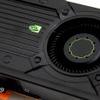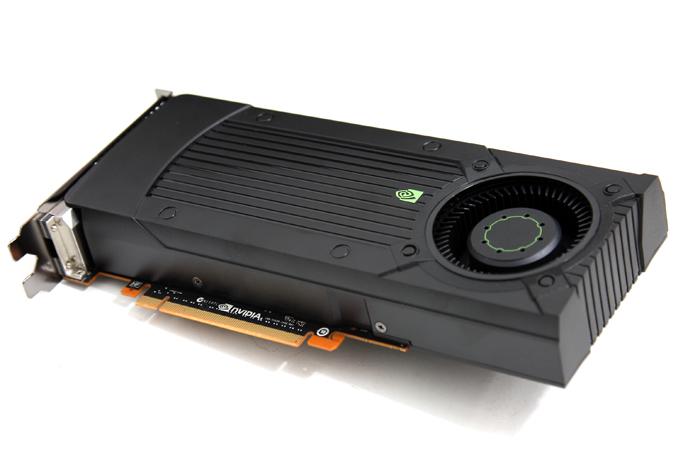Final words and conclusion
Final words and conclusion
If Nvidia prices this product competitive enough then really, the product might be a little gem in terms of performance for money. Now, this product was released basically as allergic reaction against AMD's Radeon HD 7790 released last week hence we do not know what the volume availbility will be like. Make no mistake though, the GeForce GTX 650 Ti Boost edition graphics card is a great little card that offers plenty of muscle to play today's games with good quality settings and Full HD monitor resolutions. Where the rest of the 650 Cards are marginal and lack just a that little extra bite in performance, this Boost edition simple delivers what is needed.
Performance
Realistically the GeForce GTX 650 Ti Boost edition graphics card is a good chunk faster compared to the R7790. Where the AMD card with your standard image quality settings is in the 30~35 FPS range at Full HD resolutions, this GTX 660 Ti Boost is continuesly in the 40 FPS range at 1920x1080/1200. And really it's precisely where you need to be. The frame-rates are based on modern game titles with good image quality settings. So Yeah Nvidia did really well. To be fair, this card is not a GeForce GTX 650 ... it's a GTX 660 with a few shader processors disabled. As such you see this product continuously being only a few frames per second lower than that GeForce GTX 660. But who cares right ? For less money you get nearly the same performance -- that's a win.
That makes the GeForce GTX 650 Ti Boost the all new affordable 169 EUR entry-level to mainstream gaming card. Based upon Kepler architecture this product will get you all the benefits and features this architecture has to offer. Even getting 3 or 4 monitors connected is an option. For the GTX 650 series new is a SLi connector.
Aesthetics
Looking at the reference product that NVIDIA send us we can only conclude one thing, that's 100% similar looking to the GeForce GTX 660. And yeah, it really is that very same product with a minor GPU alteration. You can't complain at the looks though, the 650 Ti Boost / GTX 660 is a mean looking card all dark black and stylish. I mean .. look at that.
Noise levels
Directly related to the aesthetics is the cooling and thus the noise levels. The GeForce GTX 650 Ti Boost edition graphics card have one fan. It's low RPM so it's not noisy airflow wise, however it makes a slight humming noise while spinning. That boosts sounds pressure and effects the measured ratings. Realistically the card is silent, but you can hear it. Should something like that bother you then be sure to check out some 3rd party cards from NVIDIA's board partners as they are mostly bound to have a customized cooler.
Power consumption
The GeForce GTX 650 Ti Boost edition is rated at a 140 Watt TDP. That is on the high side for a 650 series card really but this again is due to the nature of the GTX 660 DNA this card uses. Our measurements show that 135 Watt at peak with a modern game is more in line with what you'll see, our model was a factory reference version so expect slightly higher numbers with Factory Faster clocked products. Take that 135 Watt and add to that the processor, memory, motherboard and other peripheral devices, our recommendation stands at a 500 Watt power supply, with a decent overclock that should be sufficient.
Overclocking
Overclocking then, we again notice nice results. The board power design is 140 Watt, you may increase the power limit with another 10% which means 150~155 Watt of power consumption is at your disposal when overclocking. Basically we added 150 MHz on the clock offset, Added 300 MHz on the memory slider and that resulted the games to run 1228 MHz on the GPU core with the memory running at 6610 MHz. Remember that GPU clock can differ a little with the dynamic clocks in relation to the power signature of the application running. But yeah, if you need a little more bite, don't be afraid to overclock these cards. A 10% gain could be easily achieved allowing you to pass the 1200 MHz region based on a dynamic boost clock.
Price
As always prices remain debatable. A small overview of the lowest prices I could find:
- GeForce GTX 650 135 EUR
- GeForce GTX 650 Ti 145 EUR
- GeForce GTX 650 Ti Boost 2GB 169 EUR, 1GB 149 EUR
- GeForce GTX 660 190 EUR
- GeForce GTX 660 Ti 250 EUR
These are of course the prices for the reference clocked models. Expect the factory overclocked, or should I say faster clocked, products to be 10 to 20 bucks more expensive. And those I find to be mid-range prices. Realistically if prices come down to 160 EUR then the GTX 650 Ti Boost edition is a little gem to purchase. For that money you will receive a nice 2GB graphics card that can play all the latest games at good image quality settings with very acceptable framerates at a resolution of 1920x1080/1200. So is it good value ? Yes, it is a versatile and progressive card when it comes to features and options.
Final words
Once there is volume availability and prices will settle in the say 150 ~ 160 EUR region for the 2GB models then as far as I am concerned the GeForce GTX 650 Ti Boost edition graphics card is the card to get when it comes to mid-range performance versus price. I mean really, each and everyone of you guys by now will have upgraded towards a monitor with a resolution of 1920x1080/1200, and that's where this card will be a perfect fit as it balances out game quality and performance really well. If you need that wee bit extra then tweaking wise the product will not disappoint either, 1150~1200 MHz should not be an issue as well as with 6.4 Gbps on the memory, and that will drive performance upwards another notch.
Overall though this is the stuff that will put a smile on your face, very much recommended and embraced.
Recommended Downloads
- Sign up to receive a notice when we publish a new article
- Or go back to Guru3D's front page



